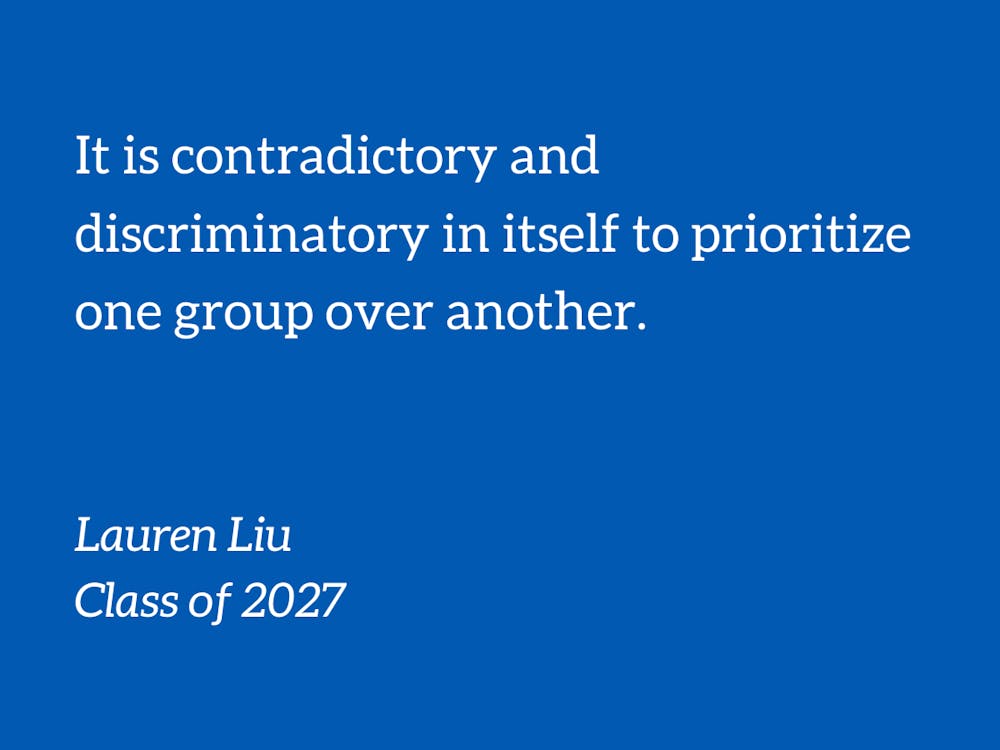Since the publishing of my previous article on race-based affirmative action, I’ve received an influx of messages expressing a diverse range of opinions. Many have reached out in support; others have challenged my viewpoints. Either way, I’m happy to have witnessed political discourse in motion, most of which has remained logical and informative.
This follow-up article seeks to address points of contention and elaborate further on class-based affirmative action. I’m aware that my article may not have presented the most original ideas in the most timely manner. Despite thinking and talking about this issue for months, I’ve never had the platform, let alone one with this reach, to formally articulate my thoughts on affirmative action. And regardless, an old, recycled argument doesn’t make it any less justified. Politics is all about refining arguments through conversation with others.
Let’s begin with the topic of racial diversity on campuses. Many have raised the argument that a race-based affirmative action system seeks to help marginalized communities in the college admissions process — “systemic racism” has made it so that certain racial groups find it more difficult to obtain resources. A class-based affirmative action system would risk turning colleges predominantly white, as legacies and donors are prioritized over other socioeconomic classes, thereby preventing the representation of marginalized communities on campuses. Furthermore, a class-based system would divide the races even more, as minority races are labeled as “poor” and the white as “rich” based on preconceived notions.
There is, of course, some merit to racial diversity. I wouldn’t want to attend a school composed almost entirely of white people. As a person of color who grew up in a predominantly Asian environment, there is a level of discomfort to that. Different races undoubtedly bring unique perspectives, identities and cultures to campus, exposure to which is crucial in creating a more inclusive world. I also agree that those with fewer resources should be assessed differently from those with greater resources.
However, the validity of combating “systemic racism” in real life does not equate to the validity of combating “systemic racism” in the college admissions process. It is not possible to solely accept Black and Latino students without disproportionately harming other races as well — it is contradictory and discriminatory in itself to prioritize one group over another. Not to mention Asian Americans, who are also historically oppressed groups, are not deemed “marginalized communities” in the college process. Does systemic racism not apply to Asian Americans as well?
The double standards are starkly clear. According to district court briefs from the Students for Fair Admissions vs. Harvard case, “An Asian-American applicant with a 25% chance of admission … would have a 35% chance if he were white, a 75% chance if he were Hispanic and a 95% chance if he were African American.”
Still not convinced? An expert report further revealed that “Removing racial and ethnic preferences (both preferences for African Americans and Hispanics and penalties for Asian Americans) while holding the total number of admits constant in each of the six years would increase the number of Asian-American admits by 674 over the six-year period, more than a 46% increase.”
The statistics speak for themselves.
Socioeconomic standing is a fairer assessment than race will ever be. Class-based affirmative action guarantees both racial and economic diversity without harming any minority group. A fair class-based system realistically wouldn’t result in a predominantly white campus: the whole point of a class-based affirmative action system is to uplift those who do not have access to the resources that children from affluent families do, the majority of whom do come from marginalized communities.
In fact, a simulation run by the Economist examining class-based affirmative action detailed that the proportion of underrepresented minorities increased from 28% to 30% and the share of first-generation students increased from 7% to a whopping 25%, all while retaining the same level of academic qualifications. Though the simulation involved the elimination of legacy admits, it’s unreasonable to assume that considering alumni relations, which is ethically sound, would mean the majority of the class would consist of wealthy, white individuals. Other affluent individuals would be assessed differently from low-income students. Access to resources is objectively a factor to consider when assessing the “merit” of a student. What’s the point of college applications if not to cultivate the most qualified students to make change in the world?
I refrain from repeating myself. More pressingly, my experience talking about affirmative action as a whole has made me realize just how polarized our political system is. We resolutely stick to our opinions without even attempting to understand the “other side.” Toxic polarization is killing our country. And with the recent passing of Dianne Feinstein, as well as the retirement of Mitt Romney, both of whom were considered moderates in Congress, Democrats and Republicans alike are becoming more extreme in their views.
The Senecan quote quot homines, tot sententiae (“there are as many opinions as there are people”) encapsulates our political scene perfectly. It’s inevitable that every individual has differing opinions. But letting emotions dictate logic, irrespective of political affiliation, isn’t conducive to any political progress. Bridging the divide between political groups does not mean eliminating disagreement, nor does it necessarily mean the childish expectation of total compromise. It entails the simple virtue of respect in conversation, without getting caught in the heat of the moment.
Without open-minded and critical exploration, we may remain in our partisan corners and turn a blind eye to the pitfalls of race-conscious affirmative action. If we can’t operate with a basic level of respect and empathy for each other’s political views, how can we expect to move forward, as a community, as a school and above all, as a country?
Lauren Liu is a Trinity first-year. Her columns typically run on alternating Tuesdays.
Get The Chronicle straight to your inbox
Signup for our weekly newsletter. Cancel at any time.

